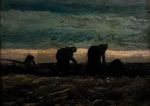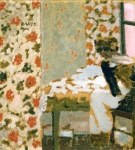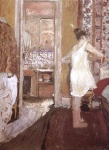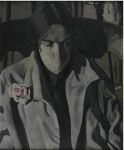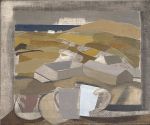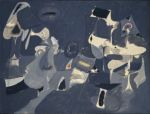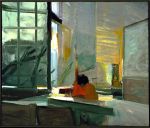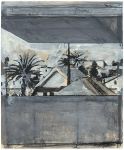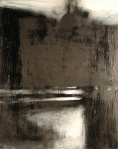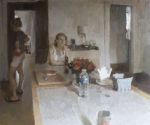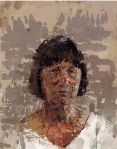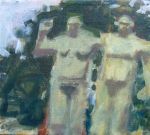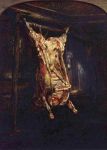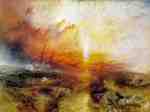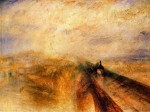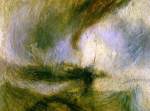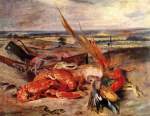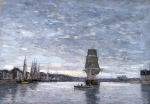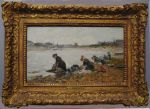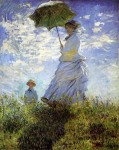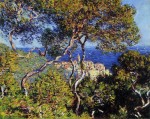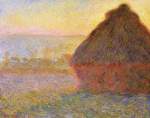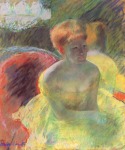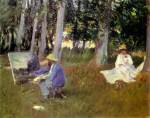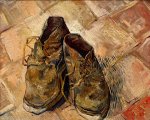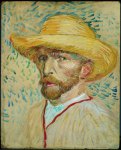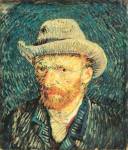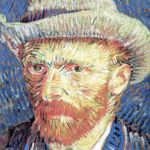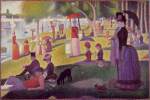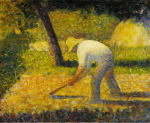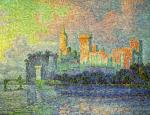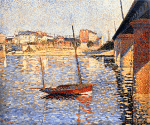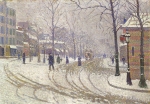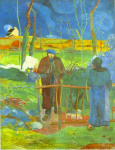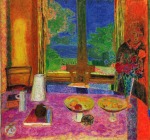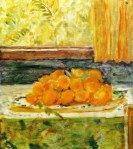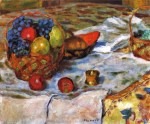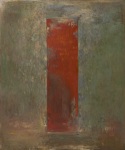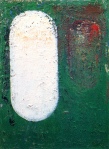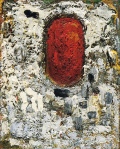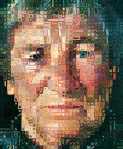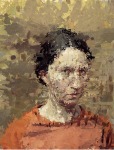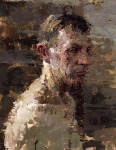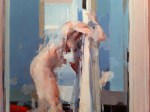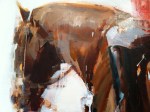Staying Neutral
March 7, 2014 § 3 Comments
Experience teaches us that limitation is the essence of creativity. Like a single flute playing in an echo chamber, the sounded notes of a few colors, a few shapes or lines set up visual resonances within the bounding space of the rectangle, multiplying complexity in unforeseen ways through their endless permutations. Using color in a limited way is a great way to explore this phenomenon. Here are some examples of works that choose to proscribe the range of color intensity, exploring the neutral zone that lies in the center of the color circle. Because of the relativity of color, the rainbow continues to assert itself but in a lowered intensity key. Color appears, not through pigmentation, but through optical relationships. Absence becomes presence.
Contemporary Figure Paintings
March 22, 2013 § Leave a comment
Every decade or so an article appears in the press proclaiming the return of the figure in art, implying that it somehow “went away.” In fact, the figure as a subject for painting never went away, and never will until the human race itself disappears. In a symposium on drawing several years ago at Randolph-Macon Womans College (now Randolph College) in Lynchburg, Virginia, I heard Janet Fish say, “Isms come and isms go, and the realists just keep painting.” (Or something to that effect.) Her statement could, I think, be applied accurately to the state of figure painting. Whatever the current obsession of the so-called art world, artists just keep painting the figure. Below is an album of some of the most compelling figure artists working today.
 Phil Geiger, figure study, oil on panel, 14″ x 10.” Collection of Frank Hobbs
Phil Geiger, figure study, oil on panel, 14″ x 10.” Collection of Frank Hobbs
“Le Petit Tache:” Divisionist Technique and Optical Mixing
February 7, 2011 § 5 Comments
Impressionist & Divisionist Technique
Landscape was the genre in which divisionist techniques were born and most developed, beginning with Turner and Delacroix who began to exploit the observations and theories of Chevreul and Goethe on the optical mixing of color by painting with distinct touches of unblended paint, side by side, allowing the color to “mix” in the eye.
The work of Turner and Delacroix, as well as that of Goethe and Chevreul in the early 19th century, had a profound impact on Monet, Pissaro, Sisley, Renoir, and others of the group that later became known as “Impressionists.” As students, their academic training taught them to shade forms off into brown and black in the shadows. These young painters could see that shadows were actually colored, and that, in fact, the whole visual field was shimmering with color sensation. Local color, the notion that things have a distinct, unchanging color, was shattered in the new awareness of how color, light, and context influence the perception of color. Their dissatisfaction with the limitations of academic teaching led them out of the studios into nature to work out a new way of painting based on the broken touch.
The technique itself was not new but its application was. The Impressionists built on an academic method widely taught in the ateliers of Paris known as the “petit-tache,” or little touch, a technique of applying unblended touches of color which later would be blended with a soft, badger-hair brush to disguise the effect and create a smoother, more refined look. The Impressionists were reviled, not only for their subject matter, which confronted every day realities of contemporary life as opposed to the classicizing conceits of academic painting, but also for exhibiting finished works with this broken touch, a direct confrontation to the tastes of the day. Seurat, and Signac developed the divisionist technique into the style known as Pointillism, based on their growing interest in the scientific application of color physics to painting.
Painters like Cezanne, Van Gogh, Gauguin, Serusier, Bonnard, and many others, were less interested in the science of color than they were in its emotional impact, and pushed color saturation into new subjective realms, developing very personal styles that derived from the use of the “petit-tache.”
- Rembrandt
- Frans Hals
- Frans Hals
- Turner
- Turner
- Turner
- Delacroix
- Boudin
- Boudin
- Monet
- Monet
- Monet
- Monet
- Cassatt
- John Singer Sargent
- Van Gogh
- Van Gogh
- Van Gogh
- Van Gogh
- Van Gogh
- Seurat
- Seurat (detail)
- Seurat
- Seurat
- Signac
- Signac
- Signac
- Signac
- Gauguin
- Serusier
- Bonnard
- Bonnard
- Bonnard
- Jake Berthot
- Jake Berthot
- Jake Berthot
- Chuck Close
- Ann Gale
- Ann Gale
- Alex Kanevsky
- Alex Kanevsky
- Alex Kanevsky



